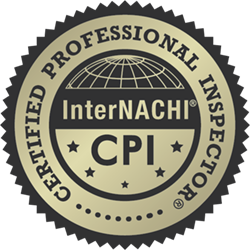Finding the next home of your dreams can be an exciting experience. Also, buying a new-to-you home can be an emotional experience too. From the moment you walked in the door with your real estate agent, you felt it was meant to be your forever home. You’ve already imagined where the furniture will go, the new window coverings, and which kid will be assigned to which room. But then it happens; home inspection day. And your home inspector found the mold. Now, what do you do?
Mold during your home inspection; now what?
Mold is a fungal growth that forms and spreads on various kinds of damp or decaying organic matter. The spores that comprise mold can spread through the environment, growing on surfaces such as paper, cloth, and wood. Unfortunately, about 70% of homes have mold, and when mold is left unaddressed, it can lead to structural issues in the house, not to mention health risks such as:
- Coughing
- Difficulty breathing
- Watery eyes
- Runny nose
- Sneezing
- Headache
- Fatigue
Repeated exposure to mold can increase a person’s sensitivity, causing more severe allergic reactions.
So, if your home inspector finds mold during your inspection, they must document the location of the mold and safely identify the spread. As the potential buyer of the property, you can then work with your real estate agent to do one of the following:
- Pull out of the deal if the mold situation is substantial or too much of a health risk
- Go back to the sellers and ask for accommodation, either asking the seller to fix the items before closing or lowering the sales price so you can have mold remediation done before you move in
Where do you find mold?
As we said earlier, mold is found in about 70% of homes, so this is not all that unusual. But the most common places where a home inspector finds mold is:
- Areas with leaking pipes
- Areas beneath roof leaks
- Basements where there has been water damage or flooding
- Areas with a visible buildup of moisture due to high humidity, poor construction, or a combination of both
- Homes with poor air circulation and ventilation (quite common in older homes)
Coincidentally, bathroom plumbing leaks and roof leaks are two of the most common issues found during a home inspection.
What is mold remediation?
Mold remediation is the term used to describe all the processes involved in removing harmful mold growth from the property. A professional remediation company that understands how mold grows and spreads will offer mold removal services to get the mold levels in your home back to a harmless point rather than a false promise of complete mold removal.
Key steps include:
- Mold testing– This step involves carefully taking a sample of either the air or a surface and sending it to a laboratory for examination under controlled conditions. During this process, the types of mold are identified.
- Containment – Perhaps the most critical step in the mold removal process is creating a containment and ventilation system. As mold results from moisture, the first step is to dry out the affected area and ensure the disturbed mold spores don’t spread to other home areas.
- Removal – Any wet or porous surface containing mold must be removed from the dwelling. Depending on the severity of the mold problem, this might include the removal of drywall, carpets, insulation, etc. During removal, trained mold removal professionals will bag up the affected materials for safety and to eliminate spore spread.
- Sanitization and cleaning– A specialized cleaning crew will clean and disinfect the location after the affected materials have been removed from the home. Solutions will be applied to kill any remaining mold and prevent future mold growth.
- Reconstruction – After the above steps have been completed, the reconstruction and/or renovation process can begin.
How much does mold remediation in New Jersey cost?
A typical mold inspection in New Jersey will cost about $400 or more, which is generally above and beyond the fee paid to the home inspector (a mold professional will conduct the official mold inspection).
The cost of mold remediation can vary greatly depending on the extent of the mold issue, the age of the home, and the materials that may need to be replaced. Mold removal costs have a wide range, with some starting at as little as $125 and others costing more than $30,000 for whole-home mold removal.
At Harrison Home Inspections, we generally tell our customers to estimate about $2.50 per square foot to contain the affected area, remove the mold, sanitize, and clean the area after the mold has been removed. Reconstruction costs, however, can vary greatly as well, depending on what you might need to replace. For example, replacing carpet in a 200 square foot space can run anywhere from $700 to $2,000 or higher, depending on the type of pad and carpet you select.
Can I still get the house?
We often get this question from homeowners in Jersey City, Bayonne, or Harrison, NJ; can I still get the house even if they found mold? We typically counsel our home inspection customers as follows:
- If the home has mold damage, don’t buy it unless the sellers will cover the cost of mold remediation and reconstruction – you could be out thousands of dollars in renovations.
- Consider the risk of future mold problems – even with the best construction, homes damaged by mold the first time are more susceptible to mold damage the second time
At Harrison Home Inspection in New Jersey, we want our home inspection customers to have peace of mind in their purchases. And you should know that not all home inspectors are the same. We’ll tell it to you straight. If we find mold during your home inspection, we’ll offer our professional opinion on the next steps so that you can partner with your real estate agent on the best path forward. While we want you to get the home you love, it is even more vital that you can safely love the home you get. Contact us to schedule your next home inspection.


.png)
